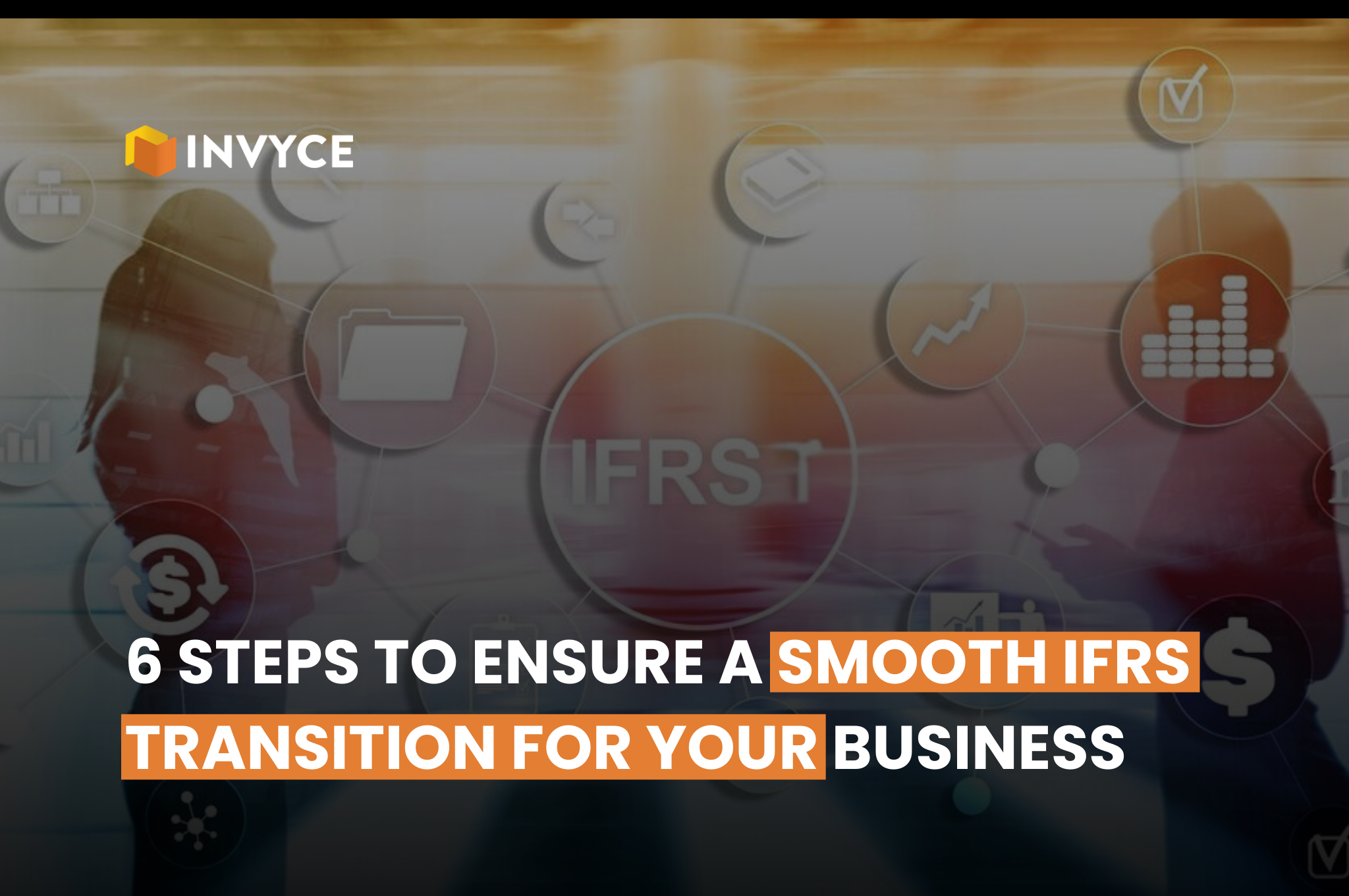14 Oct

Transitioning to the International Financial Reporting Standards (IFRS) is a significant milestone for any business, marking a shift in how financial information is recorded, reported, and understood. This move is not just about compliance; it involves a comprehensive update of your company’s financial reporting infrastructure. Successful IFRS adoption requires careful planning, cross-department collaboration, system updates, and continuous training.
In this article, we will explore six key steps to ensure a smooth transition to IFRS, providing practical guidance to help your business deal with this complex process efficiently and with little disruption.
1. Early Planning and Assessment
The foundation of a successful IFRS transition lies in early planning and a thorough assessment of your current financial processes. The first step is to evaluate the differences between your existing GAAP (Generally Accepted Accounting Principles) and IFRS, paying close attention to how these changes will affect your financial statements.
For instance, if your business has multiple leases, IFRS 16 will significantly impact your balance sheet and key financial ratios. Conduct an internal audit to map out these gaps, focusing not only on financial compliance but also on how these changes might influence investor relations, internal decision-making, and day-to-day operations.
2. Cross-Department Collaboration
IFRS transition is not confined to your finance team-it touches multiple departments like IT, legal, and operations. The best way to ensure a smooth transition is by promoting collaboration across all these teams. Each department has a unique role in the process, and a lack of alignment can cause costly delays or missteps.Create a task force that includes key representatives from each department. This cross-functional team should hold regular meetings to address updates, potential bottlenecks, and how changes in financial reporting impact operations. For instance, your IT team needs to adapt your financial systems to meet IFRS reporting requirements, while the legal department may need to review contracts to ensure compliance.Make sure all departments understand the broader impact of IFRS on their specific workflows. For example, operations may need to adjust inventory valuation processes or revenue recognition practices. Effective collaboration ensures that your company remains aligned throughout the transition.
3. Staff Training and Development
Your team needs more than theoretical knowledge of IFRS; they require practical, hands-on training specific to your company’s operations. Start by identifying key employees-such as those in financial reporting, budgeting, and even external auditors-who will be directly impacted by the new standards. Then, design a training program specific to your company’s needs.Focus on practical application rather than just theoretical instruction. Ensure your team understands not only what changes IFRS brings but how these changes will apply to their daily tasks. Create a feedback loop where employees can voice concerns or questions as they implement new processes, allowing you to continuously refine the training.Also, provide ongoing support. IFRS is not a one-time change-future updates or modifications may require additional training, so build a culture of continuous learning within your finance and accounting teams.
4. System and Process Updates
Your financial reporting systems are the foundation of a successful IFRS transition. Many companies underestimate the scale of system updates required to handle the complexity of IFRS standards, particularly for areas like financial instruments and revenue recognition.
Start by conducting a system gap analysis. Identify where your current systems fall short, and determine what changes are necessary to support IFRS compliance. For example, IFRS 9 requires complex financial disclosures that may be too intricate for your current system to handle manually. Automating these processes can ensure accuracy and efficiency.Collaborate with your IT team to ensure all necessary system upgrades are implemented early. Test these updates thoroughly before rolling them out to avoid glitches that could disrupt your financial reporting. Proper system updates not only streamline the transition but also set the foundation for long-term compliance.
5. Stakeholder Communication
During the IFRS transition, transparency is key. Investors, auditors, regulators, and board members will expect clear and frequent updates on your progress. Start by mapping out your communication strategy, focusing on how the transition will impact your financial statements and business performance.
Schedule regular meetings with investors and auditors. Clearly explain how IFRS affects earnings reports, financial ratios, and other key metrics. Provide detailed updates on the steps your company is taking to ensure compliance, and address any concerns stakeholders may have about the impact on financial performance.
Additionally, keep your internal teams informed. Regular briefings will help prevent confusion or misalignment within the company. Transparency fosters trust, which is essential for navigating this complex process.
6. Post-Implementation Review
Once your company has fully transitioned to IFRS, your job isn’t done. A comprehensive post-implementation review will ensure that the new systems and processes are functioning as expected. This stage is critical for identifying any lingering issues or areas that require further refinement.
Conduct a thorough review involving all departments that were part of the transition. Assess the performance of your financial reporting systems, and ensure that the new processes align with IFRS standards. Run tests on your financial reports to confirm compliance, and involve external auditors for an objective assessment.
Conclusion
Transitioning to IFRS can seem challenging, but with the right approach, it doesn’t have to be. By planning early, encouraging collaboration across teams, offering hands-on training, and keeping communication open, you can manage the shift smoothly. Start with a thorough assessment, align your teams, upgrade systems, train your staff, stay transparent with stakeholders, and review the process post-implementation to help your business succeed. This transition will strengthen your financial reporting and improve transparency, positioning your company for long-term growth.
Marjina Muskaan has over 5+ years of experience writing about finance, accounting, and enterprise topics. She was previously a senior writer at Invyce.com, where she created engaging and informative content that made complex financial concepts easy to understand.
Related Post
Copyright © 2024 – Powered by uConnect



Marjina Muskaan